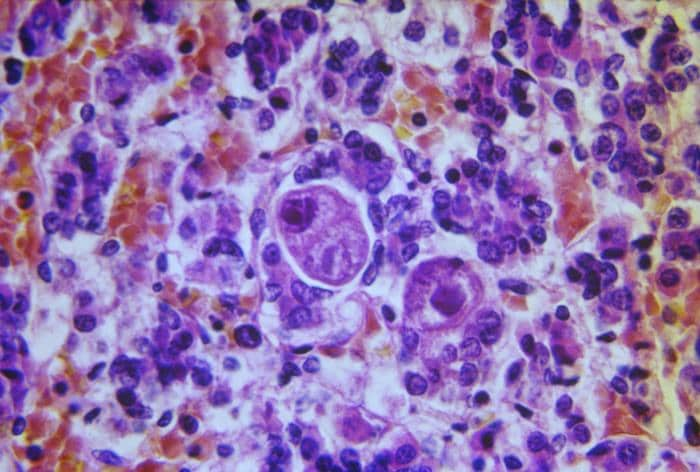Key points
- The enzyme-linked immunosorbent assay is the most common serologic test for measuring antibody to CMV.
- Congenital CMV infection cannot be diagnosed with antibody testing (IgG and IgM).
- The standard laboratory test for diagnosing congenital CMV infection is a PCR on saliva, with a confirmatory test on urine.

Types of tests
Tests for people older than 12 months
Serologic tests that detect CMV antibodies (IgM and IgG) are widely available from commercial laboratories. The enzyme-linked immunosorbent assay (ELISA) is the most common serologic test for measuring antibody to CMV.
Tests for congenital CMV in newborns
Polymerase chain reaction (PCR) on saliva is the standard laboratory test for diagnosing congenital CMV infection. Urine is usually collected and tested for confirmation. The reason for the confirmatory test on urine is that most CMV seropositive mothers shed CMV in their breast milk. This can cause a false-positive CMV result on saliva collected shortly after the baby has breast fed.
Currently, testing of newborns for CMV is not routinely performed, though some states perform targeted CMV testing of newborns who fail the hearing screening. CDC is currently studying whether dried blood spots (DBS), which are already collected on almost all newborns, can identify the majority of children who are most likely to suffer long-term health problems from congenital CMV.
Specimen collection
In newborns
Specific steps for appropriate collection of saliva samples from a baby are as follows:
- Collect a saliva specimen more than 1 hour after breastfeeding and within 3 weeks of birth. Detection of CMV after 3 weeks could be the result of post-partum infection.
- Insert a sterile cotton or polyester swab into the baby's mouth between the gum and cheek, and swirl for several seconds.
- Remove the swab and place into a buffer formulated for PCR diagnostic testing. If CMV is present, it will leach from swab to the liquid.
The liquid is processed according to manufacturer's instructions, and PCR testing is performed according to the protocol in the laboratory. Specific procedures and interpretation of tests vary according to the laboratory.
Virus detection
In people older than 12 months
Using CMV IgG testing
A positive test for CMV IgG indicates that a person was infected with CMV at some time during their life but does not indicate when a person was infected. This applies for people 12 months or older when maternal antibodies are no longer present.
Measurement of CMV IgG in paired samples taken one to three months apart can be used to diagnose primary infection. Seroconversion (1st sample IgG negative, 2nd sample IgG positive) is clear evidence for recent primary infection.
Using CMV IgM testing
The presence of CMV IgM cannot be used by itself to diagnose primary CMV infection because IgM can also be present during secondary CMV infection. IgM positive results in combination with low IgG avidity results are considered reliable evidence for primary infection.
Limitations of avidity testing
IgG avidity assays measure the binding strength between IgG antibodies and virus that can help distinguish a primary CMV infection from a past infection. Following primary CMV infection, IgG antibodies have low binding strength (low avidity), then over 2 to 4 months they mature to high binding strength (high avidity). Commercial tests for CMV avidity are available in the United States, however they are not FDA-approved and require further standardization and thus need to be used and interpreted with caution.
